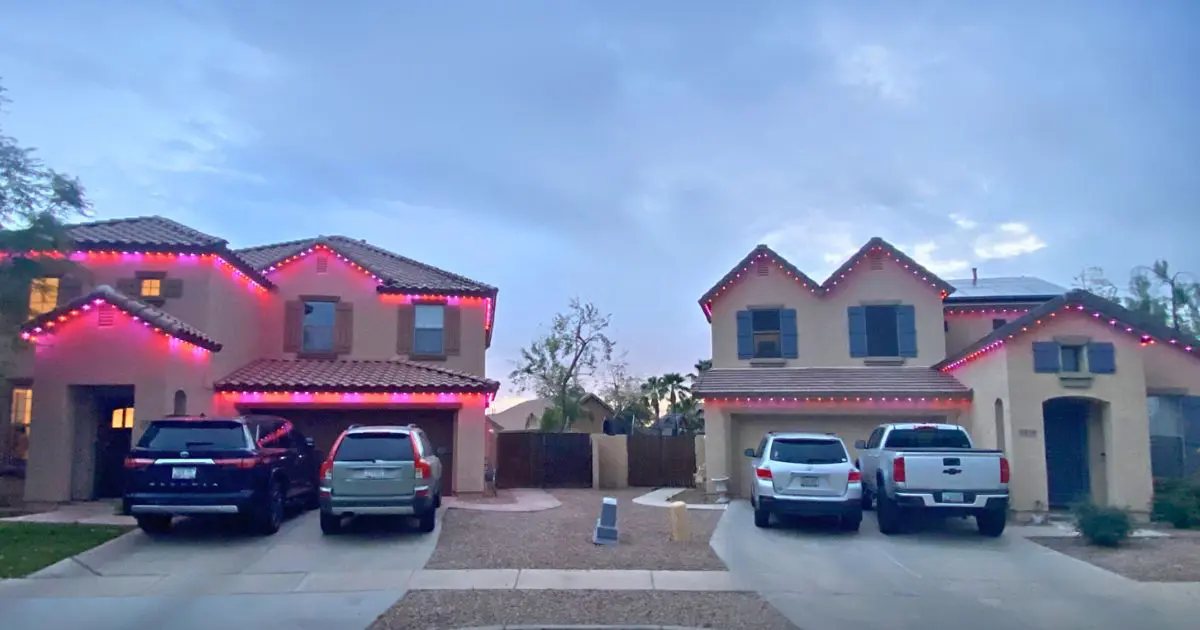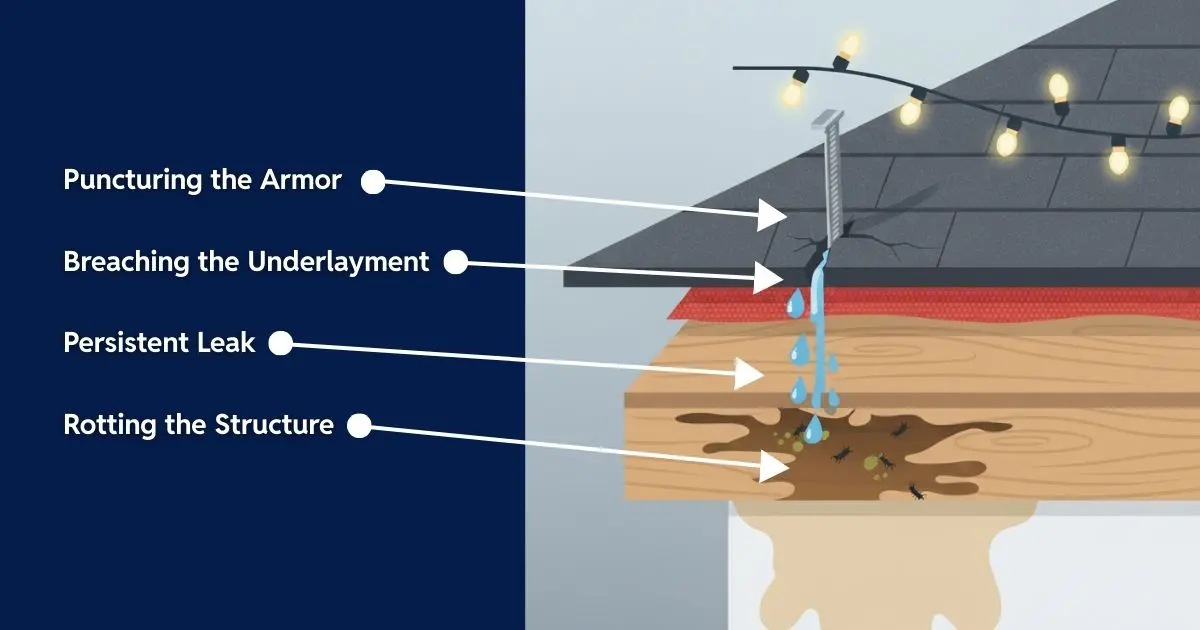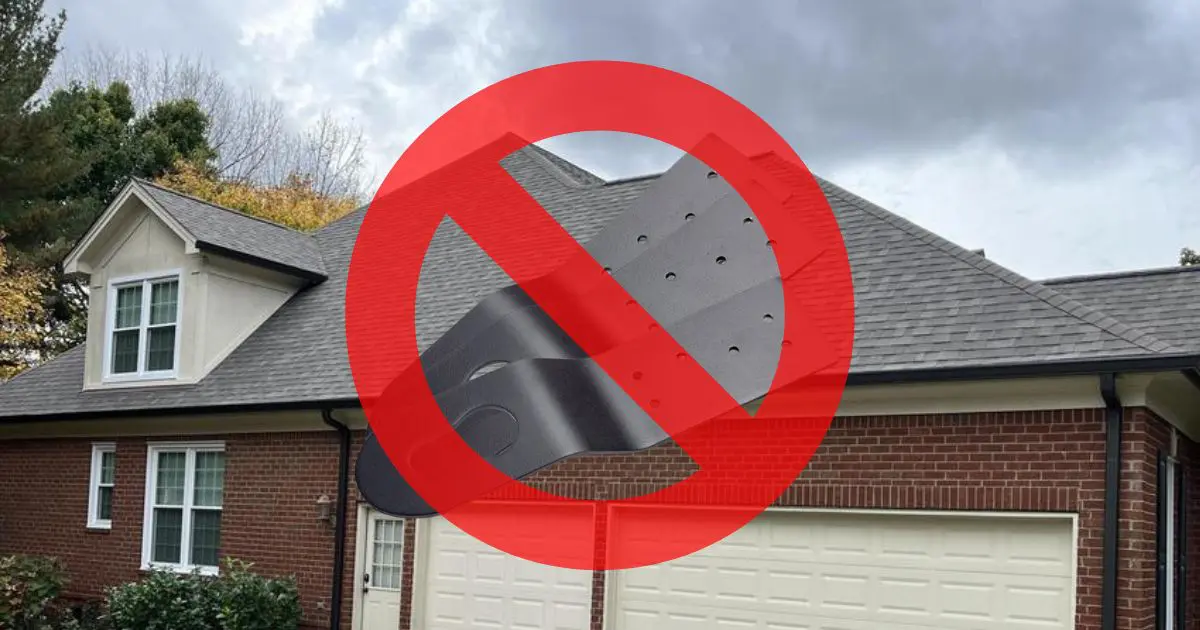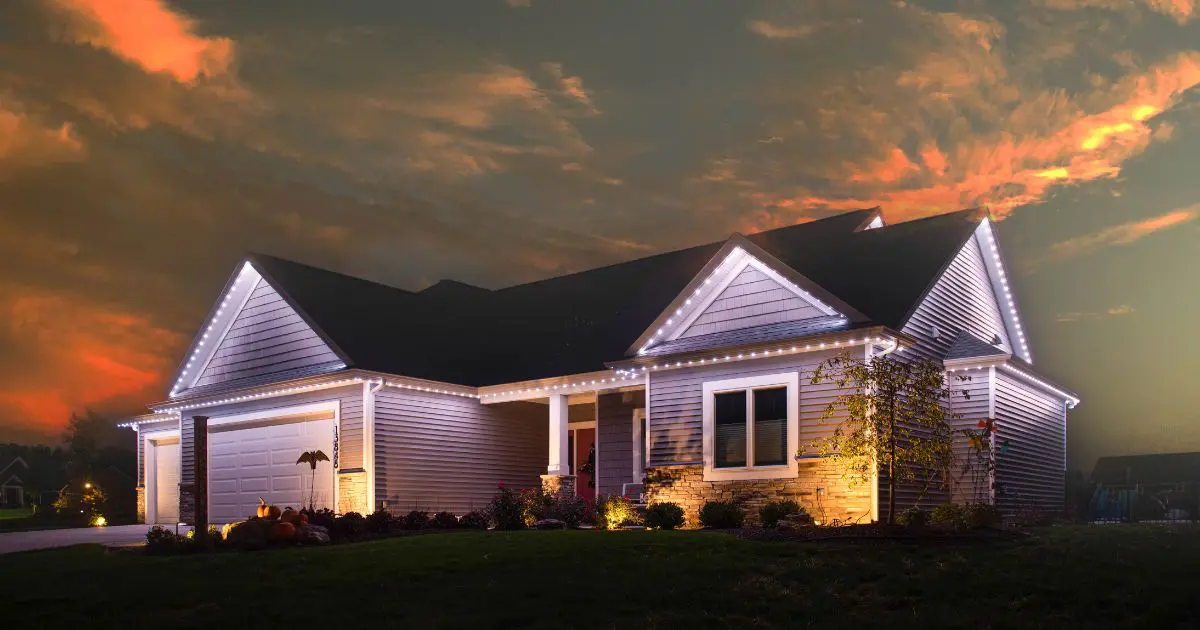A Roofer’s Guide to Holiday Lighting: Protect Your Home

As roofers, we spend our days protecting homes from the elements. Come the holiday season, we see homeowners unknowingly invite the biggest element—water—into their homes, all for the sake of a festive display. That quick weekend project of hanging Christmas lights can cause thousands of dollars in hidden damage that you may not discover for years.
Before you climb that ladder with a staple gun or hire the cheapest company from a yard sign, let’s talk about what you’re really doing to your roof.
The Dangers of DIY: How Holiday Cheer Can Lead to Costly Repairs
Hanging lights seems simple, but common methods are incredibly destructive to your roofing system. Your roof is a complex, multi-layered shield, and even the smallest breach can lead to catastrophic failure.
Common Mistake #1: Using Staples, Nails, or Screws

This is, without a doubt, the most damaging thing you can do. Every time you drive a staple or nail into a shingle, you are not just making one hole; you’re setting off a chain reaction.
- Puncturing the Armor: Your asphalt shingles are your home’s armor. A staple shatters the shingle’s surface, creating a funnel that directs water underneath it, completely bypassing its ability to shed water.
- Breaching the Underlayment: Beneath your shingles is a critical water-resistant barrier called the underlayment. That tiny staple has now created a direct channel through this last line of defense, giving water a pathway to your home’s wooden structure (the roof deck).
- Rotting the Structure: Once water reaches the wood decking, fascia, or soffit boards, it gets trapped. This leads to slow, silent wood rot, which weakens your home’s structure and can attract termites and other wood-destroying insects.
What starts as a tiny hole becomes a persistent leak, leading to stained ceilings, hazardous mold growth in your attic, and compromised structural integrity.
Common Mistake #2: Using “Roof-Safe” Plastic Clips

While better than nails, these clips come with their own set of problems. To install them, you often have to lift the edge of the shingle, which breaks the factory-applied sealant strip. This tar strip is what holds the shingle down in high winds. Once broken, the shingle is vulnerable to being ripped off in the next storm, turning a small lighting project into a major roof repair.
The Resulting Damage We See Every Year:
- Chronic, Hard-to-Find Leaks: Damage from holiday lights often results in slow drips that go unnoticed until significant mold and rot have already occurred.
- Voided Roof Warranties: Nearly every roofing manufacturer’s warranty is instantly voided by unapproved punctures. The damage caused by a $5 box of staples could leave you responsible for the full cost of a $15,000+ roof replacement.
- Reduced Curb Appeal & Home Value: Water damage leads to unsightly granule loss on shingles, warped fascia boards, and peeling paint.
Why a “Professional” Lighting Company Might Not Be Any Better
Frustrated with the risks of DIY, many homeowners turn to seasonal lighting companies. However, from a roofer’s perspective, these companies often pose an even greater risk because they create a false sense of security.
Here’s the inside truth:
- They Aren’t Roofers: Their business is hanging lights, not protecting homes. They lack the fundamental knowledge of how a roofing system manages water. They don’t understand flashing, sealant chemistry, or the specific requirements for different materials like asphalt, metal, or tile.
- Licensing is Misleading: They may have a general business license, but they are not licensed roofing contractors. This is a critical distinction. A roofing license requires specific training, testing, and proof of insurance that covers roofing-specific work.
- It’s a Volume Game: Seasonal lighting is about speed and quantity. Installers are often temporary, undertrained, and incentivized to finish jobs as quickly as possible. This leads to improper techniques, rushed work, and the use of cheap, inappropriate materials like hardware-store silicone caulk that will dry, crack, and fail in a single season of sun exposure.
- Price Over Protection: They compete on price, not on the quality of the installation or the long-term health of your home. They have no liability for the slow leak their work causes six months down the road. When you call them in the spring about a problem, their phone number may no longer be in service.
The Superior Solution: A Permanent Holiday Lighting System Installed by a Roofing Expert

The only truly safe way to add lighting to your roofline is with a system designed for permanent, waterproof integration with your home. This is why we exclusively recommend the Oelo Permanent Lighting System, but with one crucial condition: it must be installed by a licensed, certified roofer.
A premium product is only as good as its installation. Here’s why a roofer provides the only leak-proof, worry-free solution:
- We Protect the System: A roofer views every installation through the lens of water management. We install the Oelo lighting channel in a way that works with your roof’s design to shed water, never against it. We ensure it integrates perfectly with your existing flashing and gutters, preventing any possibility of water damming.
- Material and Structural Expertise: We know the precise, manufacturer-approved methods for attaching to asphalt shingles, standing seam metal, or tile without causing damage or voiding your warranty. We secure the system to your home’s structural elements (fascia and soffits), not just the decorative trim, ensuring it withstands weather for decades.
- The Right Tools for a Lifetime Seal: We don’t use caulk. We use professional-grade, elastomeric roofing sealants formulated to endure decades of extreme heat, freezing temperatures, and direct UV exposure. This is the difference between a seal that lasts and one that fails.
Investing in a permanent lighting system is an investment in your home’s value, beauty, and safety. Don’t compromise that investment by letting a non-specialist drill holes in your most important asset. Protect your home and enjoy stunning, customizable lighting for any holiday, event, or evening—all without ever climbing a ladder or risking damage again.
